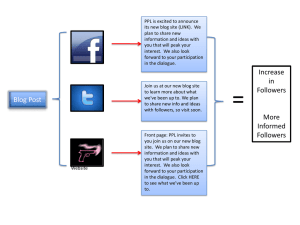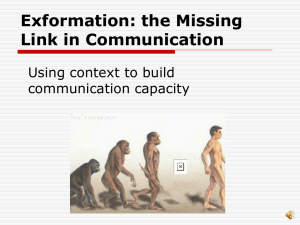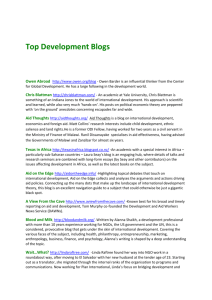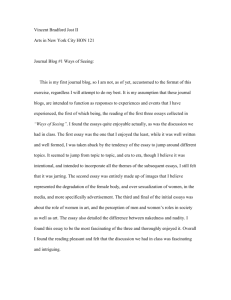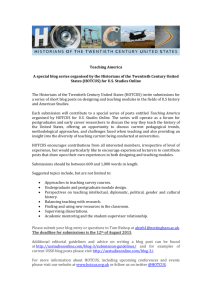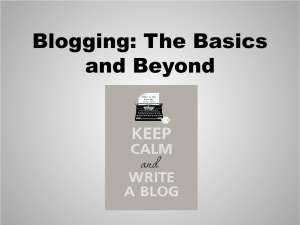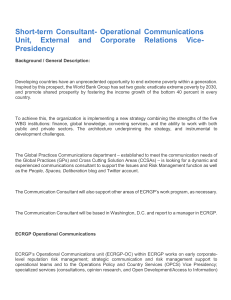Incompletes - Macaulay Honors College
advertisement
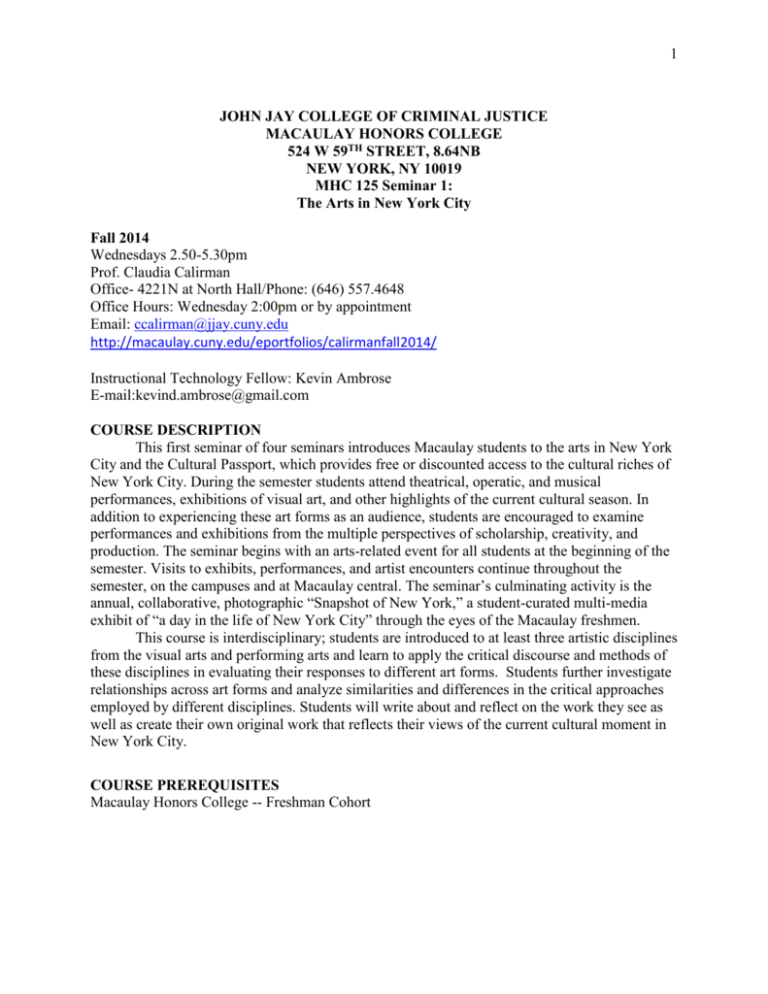
1 JOHN JAY COLLEGE OF CRIMINAL JUSTICE MACAULAY HONORS COLLEGE 524 W 59TH STREET, 8.64NB NEW YORK, NY 10019 MHC 125 Seminar 1: The Arts in New York City Fall 2014 Wednesdays 2.50-5.30pm Prof. Claudia Calirman Office- 4221N at North Hall/Phone: (646) 557.4648 Office Hours: Wednesday 2:00pm or by appointment Email: ccalirman@jjay.cuny.edu http://macaulay.cuny.edu/eportfolios/calirmanfall2014/ Instructional Technology Fellow: Kevin Ambrose E-mail:kevind.ambrose@gmail.com COURSE DESCRIPTION This first seminar of four seminars introduces Macaulay students to the arts in New York City and the Cultural Passport, which provides free or discounted access to the cultural riches of New York City. During the semester students attend theatrical, operatic, and musical performances, exhibitions of visual art, and other highlights of the current cultural season. In addition to experiencing these art forms as an audience, students are encouraged to examine performances and exhibitions from the multiple perspectives of scholarship, creativity, and production. The seminar begins with an arts-related event for all students at the beginning of the semester. Visits to exhibits, performances, and artist encounters continue throughout the semester, on the campuses and at Macaulay central. The seminar’s culminating activity is the annual, collaborative, photographic “Snapshot of New York,” a student-curated multi-media exhibit of “a day in the life of New York City” through the eyes of the Macaulay freshmen. This course is interdisciplinary; students are introduced to at least three artistic disciplines from the visual arts and performing arts and learn to apply the critical discourse and methods of these disciplines in evaluating their responses to different art forms. Students further investigate relationships across art forms and analyze similarities and differences in the critical approaches employed by different disciplines. Students will write about and reflect on the work they see as well as create their own original work that reflects their views of the current cultural moment in New York City. COURSE PREREQUISITES Macaulay Honors College -- Freshman Cohort 2 LEARNING OUTCOMES In the seminar, students will: Gather, interpret, and assess information from a variety of sources and points of view. Evaluate evidence and arguments critically or analytically. Produce well-reasoned written or oral arguments using evidence to support conclusions. Identify and apply the fundamental concepts and methods of a discipline or interdisciplinary field exploring creative expression, including, but not limited to, arts, communications, creative writing, media arts, music, and theater. Articulate how meaning is created in the arts or communications and how experience is interpreted and conveyed. Use appropriate technologies to conduct research and to communicate. REQUIRED TEXTS: All texts will be available on the Macaulay Honors College website for Seminar 1. Required Readings: John Berger, Ways of Seeing (London; BBC & Penguin, 1990: originally published in 1972), Chapter 5, pp. 83-112. Nicholas Mirzoeff, An Introduction to Visual Culture (London and New York: Routledge, 1999), Introduction: “What is Visual Culture?” pp. 1-33. Roland Barthes, Camera Lucida: Reflections on Photography (New York: Hill and Wang, 1981), Part I, pp. 3-60. Jean Robertson and Craig McDaniel, Themes of Contemporary Art: Visual Art after 1980 (Oxford: Oxford University Press, 2013), Chapter 6: “Place,” pp. 193-211. Andre Breton, “Manifesto of Surrealism” (1924) Marcel Duchamp, “Apropos of Readymades” (1961) Linda Nochlin, “Why Have There Been No Great Women Artists?” Art News 69 (January 1971), pp. 91-108. Josephine Withers, “Judy Chicago’s Dinner Party, A Personal History of Women’s History,” Art, the Ape of Nature: Studies in Honor of H. W. Jason (New York L: Harry N. Abrams, 1981). Reprinted in The Expanding Discourse: Feminism and Art History, ed. by Norma Broude and Mary D. Garrard (New York: HarperCollins Publisher, 1992), pp. 450-65. Pierre Levy, Cyberculture: Electronic Mediations (University of Minnesota, 2001), excerpts. Video Resources: Smart History/Art 21 COURSE POLICIES Your grade for this course should not come as any surprise. This is a course that you will shape. As honors students, your challenge is not to fulfill requirements–that’s easy and that’s what you’ve already done to get here. As honors students your challenge is to go beyond what is required, to design your own pathways, and to work with your classmates to create new knowledge. 3 You are required, in this class, to: Be an honorable student, online and offline. Shoot a photo of New York City on Snapshot Day (October 11) upload it to the online gallery, post about it here on the class site, and take part in the Snapshot Event on Sunday, December 8. Attend all the events and site visits we have scheduled and post about them on the class site. Do all the readings (even when they’re not texts). PARTICIPATE in class discussions. Attendance/Punctuality/Participation a. Students must arrive on time for class, and attend classes regularly. Students may miss up to three classes; upon the fourth absence, the student will be withdrawn from the class or given a grade of F. b. Each two instances of arriving late for class will count as an absence. c. Pop quizzes may be given at any time, at the professor's discretion. Cheating on a quiz is grounds for immediate failure of the course. d. In-class exercises cannot be made up outside of class or at a later date for credit. Classroom Conduct a. No use of cell phones or other electronic devices in class, unless pre-approved by the instructor. Students are expected to be respectful of each other and the professor during class. b. It is expected that students will not speak when others are speaking, and that all classroom discussants will be cognizant of the importance of forcefully stating an argument without ever attacking another student personally. c. Active use of derogatory language will not be tolerated: we may discuss derogatory language, and we may analyze it, but we will not use it to hurt others. Violations of these standards of behavior may lead, in extreme cases, to dismissal from the classroom. Plagiarism College Policy on Plagiarism Plagiarism is the presentation of someone else‘s ideas, words, or artistic, scientific, or technical work as one‘s own creation. Using the ideas or work of another is permissible only when the original author is identified. Paraphrasing and summarizing, as well as direct quotations, require citations to the original source. Plagiarism may be intentional or unintentional. Lack of dishonest intent does not necessarily absolve a student of responsibility for plagiarism. It is the student‘s responsibility to recognize the difference between statements that are common knowledge (which do not require documentation) and restatements of the ideas of others. Paraphrase, summary, and direct quotation are acceptable forms of restatement, as long as the source is cited. Students who are unsure how and when to provide documentation are advised to consult with their instructors. The Library has free guides designed to help students with problems of documentation. (From the John Jay College of Criminal Justice Undergraduate Bulletin) 4 Incompletes An incomplete will be allowed to students who have passing grades and become seriously ill or suffer tragedies that prevent them from otherwise completing the course. To receive an incomplete, the illness or tragedy must be documented in a written memo. The memo must clearly show that the emergency prevented the student from completing the remainder of the coursework. Withdrawal Procedure Ceasing to attend class or verbal notice thereof by you does not constitute official withdrawal. Accessibilities Students If you have a documented disability as described by the Rehabilitation Act of 1973 (P.L. 933112 Section 504) and Americans with Disabilities Act (ADA) and would like to request academic and/or physical accommodations please contact The Office of Services for Students with Disabilities (212) 237-8185, as soon as possible. Course requirements will not be waived but reasonable accommodations may be provided as appropriate. GRADING POLICY Your final grade for this course will be based upon performance in a number of written assignments and your class participation and behavior. The written assignments are extremely important since they reflect the students’ academic seriousness and rigor. Grading: Group Video Project: (10% of final grade). Writing Blog Assignments: (20% of final grade). Over the course of the semester students must submit at least SIX written reviews of artistic events attended in this course to be posted at your blog. All reviews are to be uploaded to the class site and included in the Cultural Passport portfolio on their due dates. Two Research Paper Assignments with Annotated Bibliography: (30% of final grade each). Class Participation and Behavior: (10% of final grade) *This class combines experiential learning and class discussion. Students are assessed on how their contributions shape the class. Attendance is required in class and for all outside events. Participation is evaluated through discussions in class, events, and the website postings. 5 Course Schedule This schedule is subject to changes over the semester. Week 1-September 3 Introduction How to talk about art? Readings: John Berger, Ways of Seeing (London; BBC & Penguin, 1990: originally published in 1972), Chapter 5, pp. 83-112. Roland Barthes, Camera Lucida: Reflections on Photography (New York: Hill and Wang, 1981), Part I, pp. 3-60. Assignment: Come to class prepared to discuss your readings, with one comment and one question for each reading. In addition, be ready to answer the questions: What is the most important idea about looking at art that you took from Berger’s book? What is the punctum in a photograph? Evening Event: Night at the Brooklyn Museum Week 2-September 10 Workshop with ITF Kevin Ambrose Using the Arts in the NYC website and writing a blog Bring your laptop to class Snapshot from NYC 2014-Be sure to take a photograph of NYC. Assignment: Blog Post #1- Upload your photograph of “something special that speaks about you” to the Macaulay website along with a one page statement. Blog Post #1 is due on Monday, September 22 Week 3-September 17 Field trip to the Metropolitan Museum of Art Meet at the information desk at 3.00pm Address: 82nd Street and 5th Avenue Exhibition on view: Garry Winogrand Garry Winogrand Galleries 691–693 & 852 The first retrospective in twenty-five years of work by Garry Winogrand (1928–1984)— the renowned photographer of New York City and of American life from the 1950s through the early 1980s—this exhibition brings together more than 175 of the artist's most iconic images, a trove of unseen prints, and even Winogrand's famed series of photos made at the Metropolitan Museum in 1969 when the Museum celebrated its centennial. It offers a rigorous overview of Winogrand's complete working life and reveals for the first time the full sweep of his career. 6 Born in the Bronx, Winogrand did much of his best-known work in Manhattan during the 1960s, and in both the content of his photographs and his artistic style he became one of the principal voices of that eruptive decade. Known primarily as a street photographer, Winogrand, who is often associated with famed contemporaries Diane Arbus and Lee Friedlander, photographed with dazzling energy and incessant appetite, exposing some twenty thousand rolls of film in his short lifetime. He photographed business moguls, everyday women on the street, famous actors and athletes, hippies, politicians, soldiers, animals in zoos, rodeos, car culture, airports, and antiwar demonstrators and the construction workers who beat them bloody in view of the unmoved police. Daily life in postwar America—rich with new possibility and yet equally anxious, threatening to spin out of control—seemed to unfold for him in a continuous stream. Assignment: Blog Post #2-Choose one photograph from our field trip to the MET and write about it on your blog. Find the Punctum in the photograph of your choice. Blog Post #2 is due on Monday, September 29. Week 4-September 24 No class (Multi Day Event) Week 5-October 1 In Class discussion: Exhibition from the Metropolitan Museum of Art Exploring Public Art in New York City Workshop with Kevin Ambrose: Preparing your video project Bring your laptop Reading: Jean Robertson and Craig McDaniel, Themes of Contemporary Art: Visual Art after 1980 (Oxford: Oxford University Press, 2013), Chapter 6: “Place,” pp. 193-211. Assignments: Blog Post #3: What is public art? Blog Post #3 due on Monday, October 6 Group Video Project: choose a public site specific art in NY Week 6-October 8 Field Trip to the Museum of Modern Art Meet at MoMA at 3.00pm Address: 54th street between 5th and 6th avenues Exhibition: The Heart Is Not a Metaphor The Heart Is Not a Metaphor is the first large-scale survey of Robert Gober’s career to take place in the United States. Gober (American, b. 1954) rose to prominence in the mid-1980s and was quickly acknowledged as one of the most significant artists of his generation. Early in his career he made deceptively simple sculptures of everyday objects—beginning with sinks before moving on to domestic furniture such as playpens, 7 beds, and doors. In the 1990s, his practice evolved from single works to theatrical roomsized environments. Featuring loans from institutions and private collections in North America and Europe, along with selections from the artist’s collection, the exhibition includes around 130 works across several mediums, including individual sculptures and immersive sculptural environments and a distinctive body of drawings, prints, and photographs. The loosely chronological presentation traces the development of this remarkable body of work, highlighting themes and motifs that emerged in the early 1980s and continue to inform Gober’s work today. Sunday, October 11-Snapshot NYC 2014 Week 7-October 15 In-class discussion on Dada and Surrealism Readings: Andre Breton, “Manifesto of Surrealism” (1924) Marcel Duchamp, “Apropos of Readymades” (1961) Assignments: First Research Paper Assignment and Annotated Bibliography Draft of First Research Paper is due on October 22 Final Paper is due on November 5 7.30pm-Fall for Dance-New York City Center Meet at 7.00pm at the entrance of New York City Center Address: 55th street between 5th and 6th avenues Assignments: Blog Post #4 on Fall for Dance Performance Write about the different styles of dance presented at Fall for Dance Blog Post #4 is due on Monday, October 20 Week 8-October 22 Draft of First Research Paper is due/Individual meetings with professor Week 9-October 29 Prepare for the Field Trip to the Opera Carmen by Georges Bizet at the Metropolitan Opera (On Tuesday, Oct. 28 at 7.00pm) Guest Speaker: James Jorden, Opera Critic Assignment: Blog Post #5 on Opera Carmen Give your opinion on whether or not you feel opera is an efficient art form for your generation. What aspect of the performance were you interested and why? Blog Post #5 on Opera Carmen is due on November 10 8 Readings: “A-Z of Opera:” http://www.naxos.com/education/opera_intro.asp “The Listener’s Job Description:” http://www.naxos.com/education/enjoy_jobdesc.asp “Ways to Listen:” http://www.naxos.com/education/enjoy2_waystolisten.asp Tuesday, October 28 at 7pm Field Trip to the Metropolitan Opera to see Carmen by Georges Bizet Meet at the Met Opera at 12.30pm in order to be in your seat by the time of the performance. Address: Lincoln Center (Columbus Avenue, between 63rd and 64th streets) Week 10-November 5- Feminism Assignments: First Research Paper and Annotated Bibliography is due Instructions for Second Research Paper will be discussed in class Second Research Paper draft is due on December 3 Final Second Research Paper draft is due on December 17 Readings: Linda Nochlin, “Why Have There Been No Great Women Artists?” Art News 69 (January 1971), pp. 91-108. Josephine Withers, “Judy Chicago’s Dinner Party, A Personal History of Women’s History,” Art, the Ape of Nature: Studies in Honor of H. W. Jason (New York L: Harry N. Abrams, 1981). Reprinted in The Expanding Discourse: Feminism and Art History, ed. by Norma Broude and Mary D. Garrard (New York: HarperCollins Publisher, 1992), pp. 450-65. Come prepare to discuss your readings in class. Prepare a question and a comment. Week 11- November 12 Field Trip to the Brooklyn Museum Meet at the Brooklyn Museum at 3.30pm Exhibition on view: Feminist Wing: Permanent installation The Dinner Party by Judy Chicago (1979) and special exhibition Judith Scott—Bound and Unbound Judith Scott—Bound and Unbound Judith Scott’s work is celebrated for its astonishing visual complexity. In a career spanning just seventeen years, Scott developed a unique and idiosyncratic method to produce a body of work of remarkable originality. Often working for weeks or months on individual pieces, she used yarn, thread, fabric, and other fibers to envelop found objects into fastidiously woven, wrapped, and bundled structures. Born in Columbus, Ohio, with Down syndrome, Scott (1943–2005) was also largely deaf and did not speak. After thirty-five years living within an institutional setting for people with disabilities, she was introduced in 1987 to Creative Growth Art Center—a visionary studio art program 9 founded more than forty years ago in Oakland, California, to foster and serve a community of artists with developmental and physical disabilities. Friday, November 14 at 7.30pm Play Father Comes Home from the Wars by Pulitzer Prize winner Suzan-Lori Parks (Oct. 15Nov. 16) at the Public Theatre. Meet at Public Theatre at 7.00pm Address: 425 Lafayette Street Blog Post #6 on Play Father Comes Home from the Wars Blog Post #6 on Play Father Comes Home from the Wars is due on Monday, November 24. Father Comes Home from the Wars is an explosively powerful drama about the mess of war, the cost of freedom, and the heartbreak of love, with all three parts seen in one night. Part 1 introduces us to Hero, a slave who must choose whether or not to join his master on the Confederate battlefield. In Part 2, a band of rebel soldiers test Hero's loyalty as the cannons approach. Part 3 finds Hero's loved ones anxiously awaiting his return. Week 12- November 19 Guest Speaker: Dan Moses, Sound Designer of Father Comes Home from the Wars Sunday, November 23- New York Historical Society- Exhibition Snapshot NYC 2014 Week 13- November 26 Film Viewing: Exit through the Gift Shop The story of how an eccentric French shop keeper and amateur film maker attempted to locate and befriend Banksy, only to have the artist turn the camera back on its owner. The film contains footage of Banksy, Shephard Fairey, Invader and many of the world's most infamous graffiti artists at work - Written by Sundance Film Festival. Week 14-December 3 Draft of the Second Research Paper Assignment and Annotated Bibliography is due- Individual meetings with professor Week 15-December 10-Pop Art Final Research Paper Assignment and Annotated Bibliography is due Week 16- December 17- TBA 10 Important Dates: September 3 September 17 September 22 September 29 October 3 October 6 October 8 October 11 October 15 October 20 October 22 October 28 November 10 November 12 November 14 November 23 November 24 December 3 December 10 December 17 Night at the Brooklyn Museum Field trip to Metropolitan Museum of Art-3.00pm Blog Post #1 is due on Snapshot from New York Blog Post #2 is due on Met Photograph’s Punctum Night Out at Brooklyn Museum Blog Post #3 is due on Public Art Field trip to MoMA-3.00pm Snapshot NYC 2014 Field trip to Fall to Dance- 7.00pm at New York City Center Blog Post #4 is due on Fall to Dance Draft of First Research Paper is due Opera Carmen at Met Opera-12.30pm Blog Post #5 is due on Opera Carmen Field trip to Brooklyn Museum-3.00pm Field trip to play Father Comes Home from the WarsPublic Theatre at 7.00pm New York Historical Society (Snapshot NYC exhibition) Blog Post #6 is due on play Father Comes Home from the Wars Draft of Second Research Paper is due Final Research Paper is due Final Class
